Ways of Comparing and Contrasting Synonyms
Although synonyms have similar meanings, it is possible to distinguish between their usage. One of the most precise ways to investigate the subtle characteristics of words’ use is to search these entities in corpora. The current assignment uses the British National Corpus (BNC) to compare the meaning of two synonyms and to provide an example of how corpus tools benefit linguistic research. The two words chosen for the comparison in the first question are contemporary and current. The search in the BNC will demonstrate that these words are used in different kinds of texts and are associated with specific semantics.
To start with, one can look at the words’ definitions in the dictionaries. According to Oxford Dictionary (Oxford Learner’s Dictionaries), contemporary is an adjective that has three meanings, namely, “belonging to the same time,” “belonging to the present time,” and “following modern ideas in style or design.” Current can be used in the meaning of “happening now; of the present time,” or “being used by or accepted by most people” (Oxford Learner’s Dictionaries). The next step is to look at how these terms are presented in the corpus.
The most frequent types of texts in which contemporary is used are academic literature (frequency = 1479) and magazines (frequency = 719) (Fig. 1). Current is most often used in non-academic texts (frequency = 3400) (Fig. 2). Moreover, current can be found quite often in almost all types of texts, except for literary fiction and speech, while contemporary seems to be specific to two kinds of literature. Thus, contemporary is more likely to be encountered in an academic context, while current has a more general use.
Furthermore, BNC offers a separate search for word comparison (Fig. 3). According to the outcome of this search, the most frequent words associated with contemporary are the concepts from art and crafts, such as painting, dance, and artist (Fig. 4). Current is usually observed in the context of economic terms, for example, rate, assets, and deficit (Fig. 4). Therefore, the comparison showed that the words imply different semantics of the context.

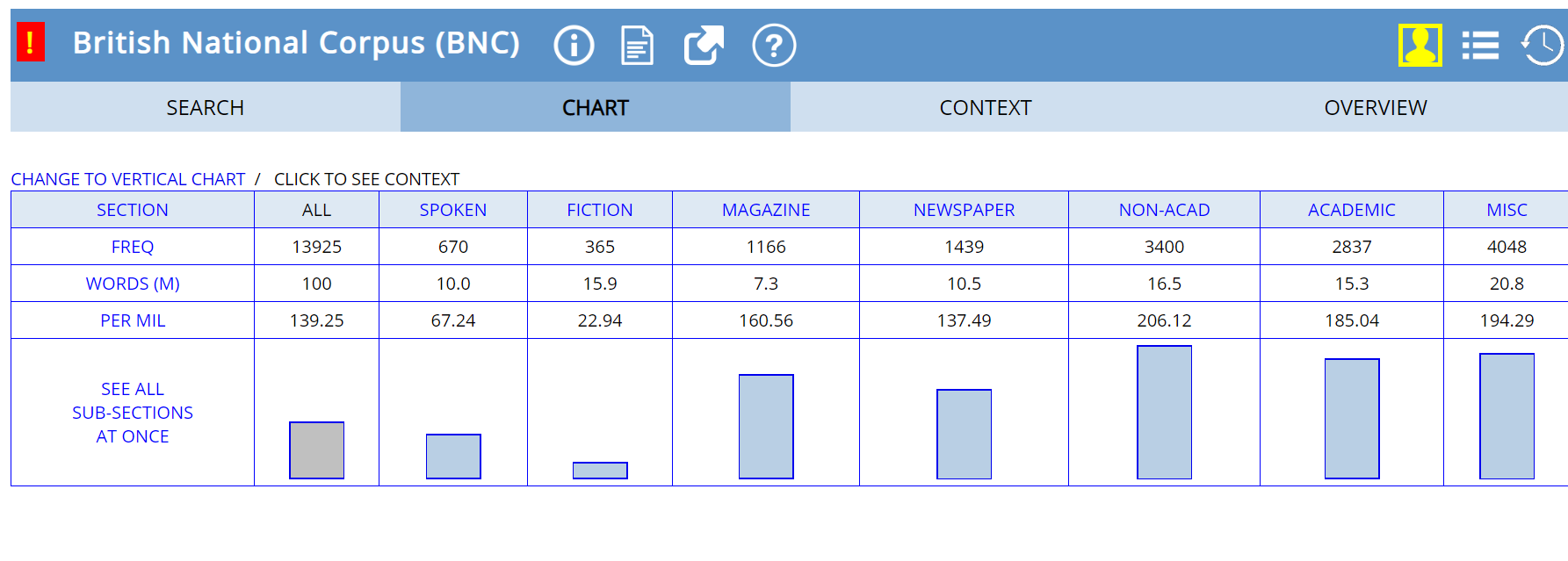
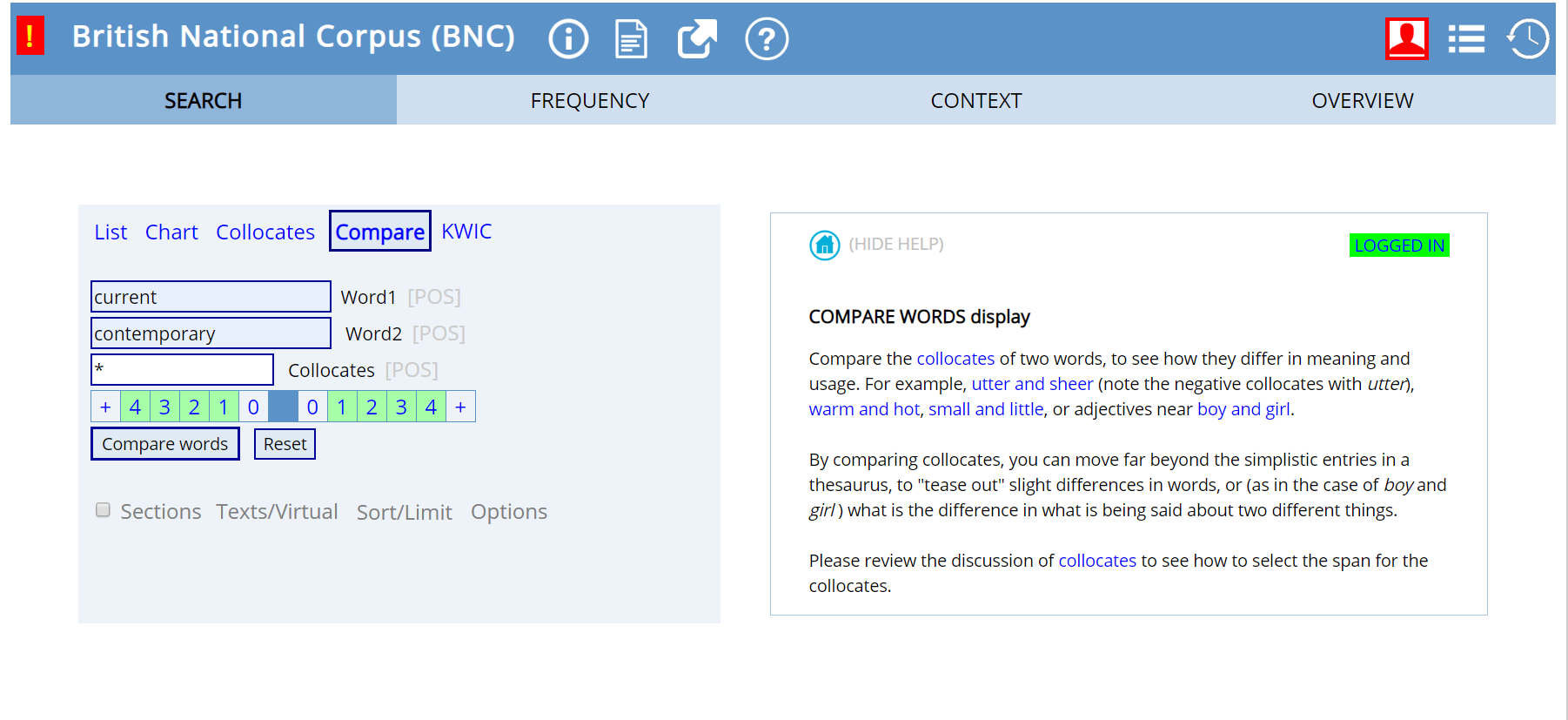
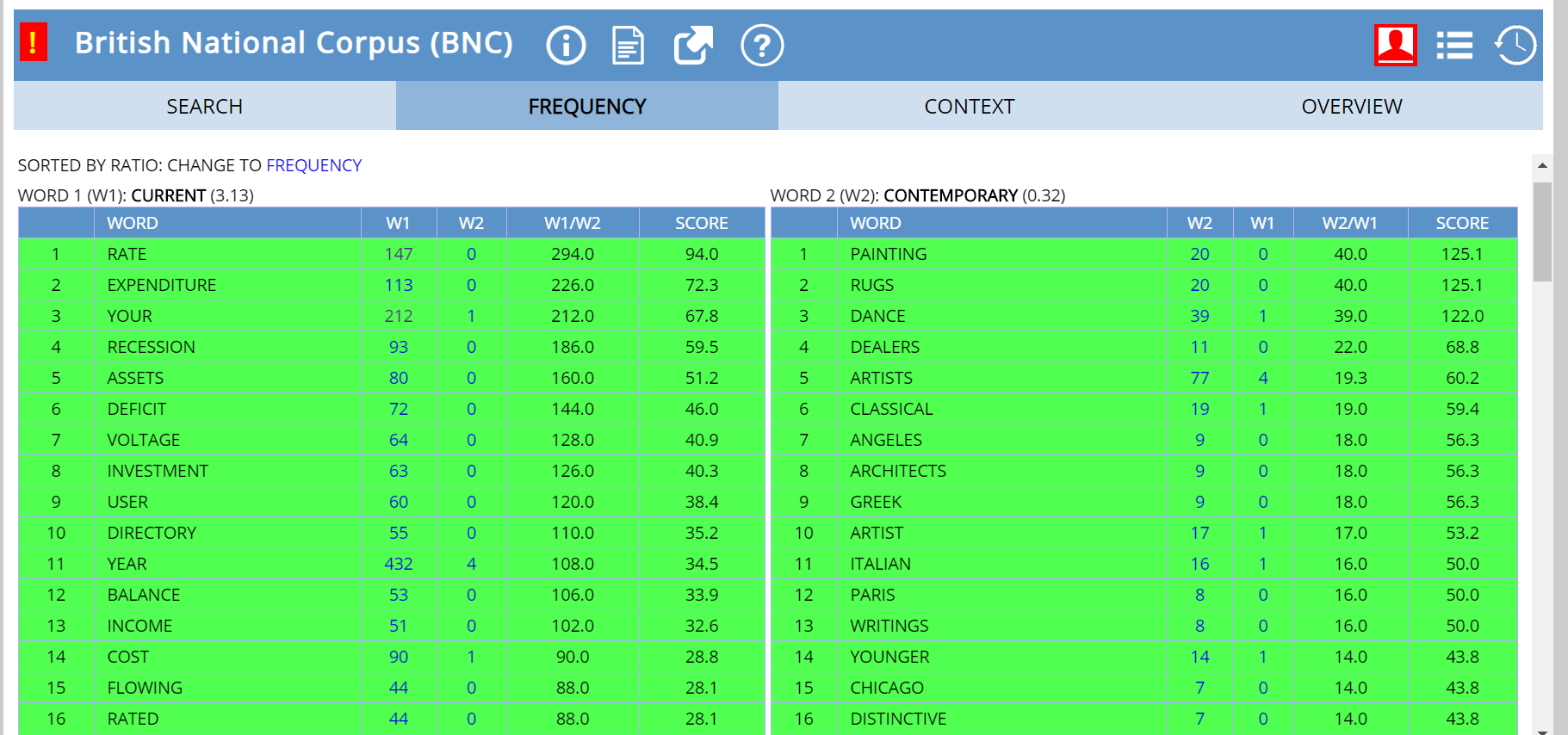
Uncountable Nouns
Uncountable nouns are appealing for the search in corpora because they can show examples of the grammatical properties of these words’ usage. For the second question, the same corpus will be used to study how the word data is grammatically treated in use. Although data is an uncountable noun, it is likely that there is a preferable usage of this word. According to the Oxford Dictionary, data is uncountable, but “used as a plural noun in technical English” (Oxford Learner’s Dictionaries). The corpus search will show that data is more often observed in the plural number.
It is possible to specify the query to search for the collocations of data with a verb (Fig.5). According to the results of this search, the most frequent verb observed after data is are (Fig. 6). Are is used with plural numbers, and, therefore, data is most often perceived as plural. If one looks at the context of data usage, it will be apparent that there are many examples of collocation, where data is plural (Fig. 7). For example, there are recordings, such as complete data are available, can be seen that data were collected, data are expressed as the change in absorbance. However, the second frequent verb after are was is (Fig.6). The difference is between frequencies does not seem dramatic (491 and 452). That is why the preference for the usage as a plural noun may be insignificant. Therefore, data is more often used as a plural noun, although it is probably not an absolute preference.
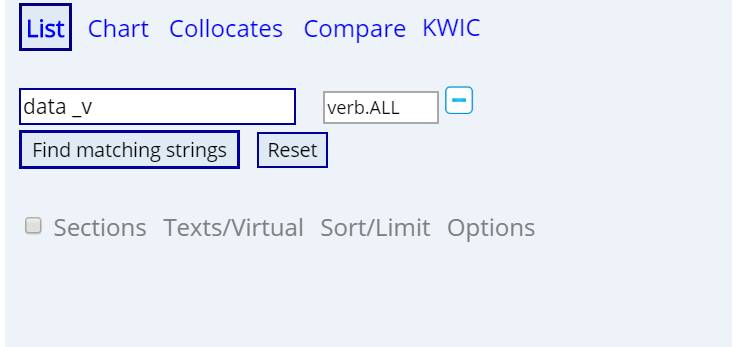
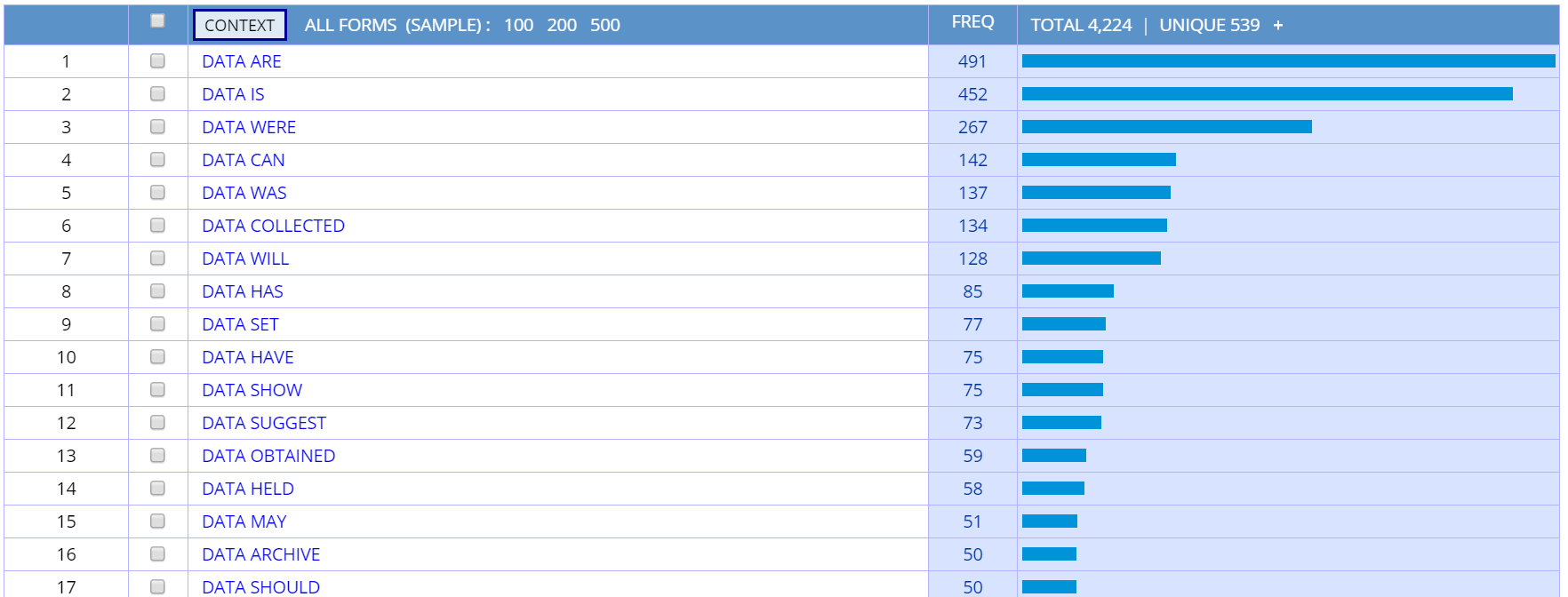

To conclude, corpus tools help to study unobvious linguistic characteristics. Using BNC, this paper showed the ways to compare and contrast synonyms, and to find out how language users perceive an uncountable noun. Corpora offered several functions, such as showing frequencies by text type and specifying the part of speech in collocation. Thus, it is necessary to use these tools to conduct a thorough investigation of the language in use.
Works Cited
Oxford Learner’s Dictionaries. Oxford University Press, 2020. Web.
The British National Corpus. Oxford University Press. Web.